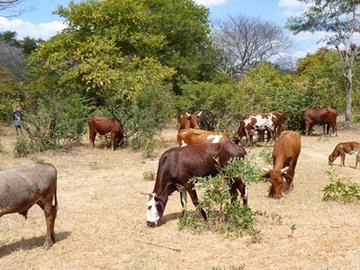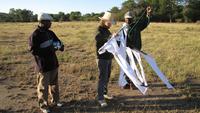Hugo Valls
Last update: 21 January 2018
Summary
To download the PhD thesis click here
Water and forage are key non-substitutable resources for herbivores in arid and semi-arid ecosystems. The distribution of surface water determines the distribution and abundance of water dependent animal species: yet little is known about the processes involved at the individual level. To answer this question, African savanna elephant (Loxodonta Africana), zebra (Equus quagga), buffalo (Syncerus caffer) and cattle (Bos taurus & Bos indicus) were tracked with GPS collars within and on the outskirts of Hwange National Park, Zimbabwe.
Elephants behave as multiple central place foragers: They visit waterholes periodically every 5h, 24h, 48h or 72h and travel further from water during longer trips. During the dry season, temperatures increase and forage becomes depleted closer to water. Elephant family groups visit waterholes more often by increasing the proportion of briefer trips and abandoning 72h trips. However, they forage further during 24h trips by increasing travelling speed. Elephant movement patterns reveal that locomotional and navigational abilities are at the core of their coping strategies although these abilities are seldom allowed to vary in most foraging models of animal's use of heterogeneously distributed resources.
During these foraging trips, family herds select areas with low waterhole density at multiple scales. Selection strength for low density areas increases with both distance to water and the advancement of the dry season. While scaling effects are widely recognized, the effects of the spatial distribution of multiple central places constraining foraging have been ignored although they determine depletion effects and their feedbacks on habitat selection.
In addition, elephant and buffalo strongly avoid livestock and people that herd them at the boundary of a protected area during the rainy season. Nevertheless, avoidance decreases during the dry season when foraging and drinking resources become scarce. Elephants are increasingly constrained by surface water availability during the dry season as their drinking requirements increase while they strive to maintain their forage intake. This study provides quantitative assessment of individual water dependence and of landscape effects of surface water distribution on a large herbivore. These findings can inform surface water management in contexts of aridification resulting from climate change.
Last update: 21 January 2018


